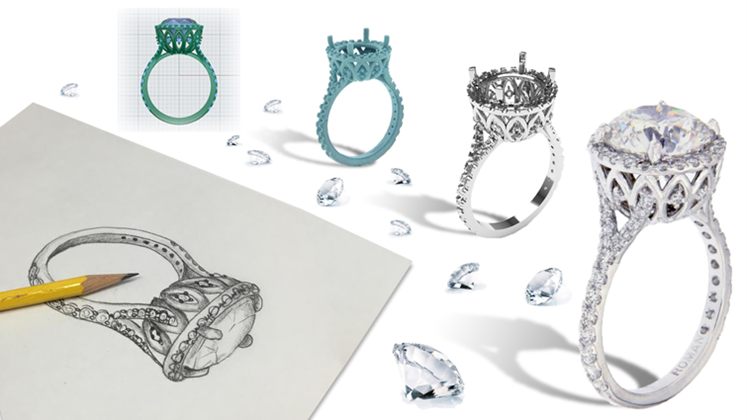Traditional Craftsmanship vs. 3D Printing: The Future of Jewelry Making
8/20/20252 min read


Introduction
The world of jewelry making has been transformed dramatically over the years, experiencing a palpable tension between traditional craftsmanship and modern technologies such as 3D printing. While both methods have their unique merits, understanding their differences can provide insights into the future of jewelry creation.
Traditional Craftsmanship: Timeless Skill and Artistry
Traditional craftsmanship in jewelry making has been a revered art form for centuries. Jewelers who specialize in this age-old technique often possess extraordinary skills passed down through generations. The meticulous process involves manual techniques to shape, mold, and design intricate pieces, enabling artisans to express their creativity and sensitivity to materials.
Each creation not only serves as a piece of jewelry but also tells a story, often imbued with personal or cultural significance. The tactile connection to materials such as gold, silver, or precious gemstones allows artisans to refine their products through touch and experience, leading to an undeniable sense of authenticity in their creations.
3D Printing: The New Age of Jewelry Manufacturing
In stark contrast, 3D printing technology has ushered in a new era of mass customization and precision in jewelry production. This innovative method utilizes computer-aided design (CAD) software to create models that are then fabricated layer by layer using a 3D printer. The integration of this technology provides numerous advantages, including speed, accuracy, and the ability to produce complex designs that would be challenging to achieve with traditional techniques.
The flexibility offered by 3D printing enables designers to experiment with unconventional materials, textures, and shapes, making it possible to create personalized items tailored to individual preferences. Furthermore, 3D printing significantly lessens waste, as the process only uses material necessary for each piece, thus promoting sustainability—a growing concern in today’s market.
Finding Harmony: The Future of Jewelry Making
As we navigate the future of jewelry making, it becomes increasingly apparent that both traditional craftsmanship and 3D printing each have valuable contributions to make. While traditional craftsmen instill artistry and narrative into their pieces, the efficiency and innovative potential of 3D printing cannot be overlooked.
This duality suggests a possible fusion where artisans may leverage 3D printing to complement their handcrafted products, perhaps using it for prototyping or embellishments. Such collaboration could yield unique and distinguished pieces that celebrate both heritage and modernity.
In conclusion, the jewelry making industry stands on the threshold of a dynamic evolution driven by technological advancements. The key lies in harnessing the strengths of each methodology, ensuring that traditional craftsmanship continues to flourish, even as 3D printing emerges as a staple in jewelry design. By understanding and embracing both worlds, we can anticipate a future rich in diversity, creativity, and sustainability in the art of jewelry making.




